#historical fictions
Text


Marie Antoinette (2022) • Reign (2013-2017)
Emilia Schüle as Marie Antoinette|
Adelaide Kane as Mary Stuart
#marie antoinette#mary stuart#reign#emilia schüle#adelaide kane#parallels#queen of france#queen of scots#smiles#happiness#engagement#dauphin of france#gifs#historical fictions#francis de valois#louis de bourbon#louis xvi#francis ii#falling in love#husbands and wives#looking at louis#looking at francis#queens in love❤❤#louis cunningham#toby regbo
5 notes
·
View notes
Note
I saw you like well-developed, researched, authentic sapphic historical fiction (such as A League Of Their Own) and I've just gotta ask you: have you heard of Burn the House Down by Kenna Jenkins? It's an alternate history novel abt the 1st woman president in 1945 and her secret interracial sapphic relationship and her bearded marriage with her mlm best friend/biggest foil. It also has a subplot about arson at the White House, ft. an entirely queer main cast and really fleshed out characters, and has a really satisfying ending!
Well, you have me pretty much figured out yeah!! I've never heard of that novel actually, but you've made an excellent job of convincing me to read it as soon as possible, I'll order it as soon as I can, it sounds exactly like something I would LOVE. Thank you so so much for this, I really appreciate it!
#burn the house down#aloto#a league of their own#historical fictions#wlw#book recs#one of my favourite asks ever#im so excited to read this
2 notes
·
View notes
Text
One of my biggest nitpicks in fiction concerns the feeding of babies. Mothers dying during/shortly after childbirth or the baby being separated form the mother shortly after birth is pretty common in fiction. It is/was also common enough in real life, which is why I think a lot of writers/readers don't think too hard about this. however. Historically, the only reason the vast majority of babies survived being separated from their mother was because there was at least one other woman around to breastfeed them. Before modern formula, yes, people did use other substitutes, but they were rarely, if ever, nutritionally sufficient.
Newborns can't eat adult food. They can't really survive on animal milk. If your story takes place in a world before/without formula, a baby separated from its mother is going to either be nursed by someone else, or starve.
It doesn't have to be a huge plot point, but idk at least don't explicitly describe the situation as excluding the possibility of a wetnurse. "The father or the great grandmother or the neighbor man or the older sibling took and raised the baby completely alone in a cave for a year." Nope. That baby is dead I'm sorry. "The baby was kidnapped shortly after birth by a wizard and hidden away in a secret tower" um quick question was the wizard lactating? "The mother refused to see or touch her child after birth so the baby was left to the care of the ailing grandfather" the grandfather who made the necessary arrangements with women in the neighborhood, right? right? OR THAT GREAT OFFENDER "A newborn baby was left on the doorstep and they brought it in and took care of it no issues" What Are You Going to Feed That Baby. Hello?
Like. It's not impossible, but arrangements are going to have to be made. There are some logistics.
#idk what to tag this#worldbuilding#writing fiction#historical fiction#fantasy#a real-life example: my dad (a pediatrician) was once entrusted with the care of a baby who was born with a rare condition#this was in a place without great hospital/medical access and anyway they were going to fly the baby over#and he specifically asked them to bring the mother and baby#they show up with baby and...the baby's uncle#and he was like. y'all. do you think I asked for the mom to come just for fun??? We don't have formula here. what is the baby going to eat?
43K notes
·
View notes
Text
PSA to all historical fiction/fantasy writers:
A SEAMSTRESS, in a historical sense, is someone whose job is sewing. Just sewing. The main skill involved here is going to be putting the needle into an out of the fabric. They’re usually considered unskilled workers, because everyone can sew, right? (Note: yes, just about everyone could sew historically. And I mean everyone.) They’re usually going to be making either clothes that aren’t fitted (like shirts or shifts or petticoats) or things more along the lines of linens (bedsheets, handkerchiefs, napkins, ect.). Now, a decent number of people would make these things at home, especially in more rural areas, since they don’t take a ton of practice, but they’re also often available ready-made so it’s not an uncommon job. Nowadays it just means someone whose job is to sew things in general, but this was not the case historically. Calling a dressmaker a seamstress would be like asking a portrait painter to paint your house
A DRESSMAKER (or mantua maker before the early 1800s) makes clothing though the skill of draping (which is when you don’t use as many patterns and more drape the fabric over the person’s body to fit it and pin from there (although they did start using more patterns in the early 19th century). They’re usually going to work exclusively for women, since menswear is rarely made through this method (could be different in a fantasy world though). Sometimes you also see them called “gown makers”, especially if they were men (like tailors advertising that that could do both. Mantua-maker was a very feminized term, like seamstress. You wouldn’t really call a man that historically). This is a pretty new trade; it only really sprung up in the later 1600s, when the mantua dress came into fashion (hence the name).
TAILORS make clothing by using the method of patterning: they take measurements and use those measurements to draw out a 2D pattern that is then sewed up into the 3D item of clothing (unlike the dressmakers, who drape the item as a 3D piece of clothing originally). They usually did menswear, but also plenty of pieces of womenswear, especially things made similarly to menswear: riding habits, overcoats, the like. Before the dressmaking trade split off (for very interesting reason I suggest looking into. Basically new fashion required new methods that tailors thought were beneath them), tailors made everyone’s clothes. And also it was not uncommon for them to alter clothes (dressmakers did this too). Staymakers are a sort of subsect of tailors that made corsets or stays (which are made with tailoring methods but most of the time in urban areas a staymaker could find enough work so just do stays, although most tailors could and would make them).
Tailors and dressmakers are both skilled workers. Those aren’t skills that most people could do at home. Fitted things like dresses and jackets and things would probably be made professionally and for the wearer even by the working class (with some exceptions of course). Making all clothes at home didn’t really become a thing until the mid Victorian era.
And then of course there are other trades that involve the skill of sewing, such as millinery (not just hats, historically they did all kinds of women’s accessories), trimming for hatmaking (putting on the hat and and binding and things), glovemaking (self explanatory) and such.
TLDR: seamstress, dressmaker, and tailor are three very different jobs with different skills and levels of prestige. Don’t use them interchangeably and for the love of all that is holy please don’t call someone a seamstress when they’re a dressmaker
#sewing#historical sewing#sewing knowledge#writing guide#PSA to writers#historical fiction#fantasy writing
18K notes
·
View notes
Text
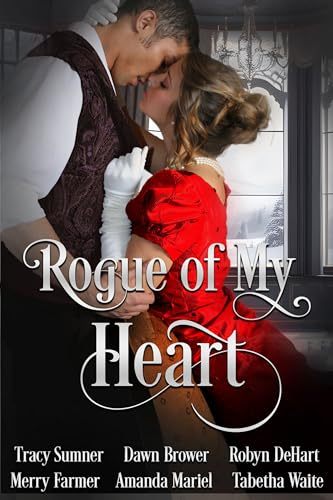
REVIEW
Rogue of My Heart
Six historical novellas to give you a taste of authors you may love or have yet to read ~ Am halfway through and posting as today is release day. I will write reviews for the other half as I read them.
TEMPTING THE SCOUNDREL by Tracy Sumner was a delight the first time I read it and just as wonderful when revisited last night. I loved this story of a young man who sees “the one” but leaves to apprentice to a watchmaker only to serendipitously find “the one” ten years later while repairing clocks for a titled gentleman. Love this author and loved revisiting this story.
LOVING MY WICKED ROGUE by Dawn Brower introduced me to a new author that had me scratching my head. This was a bit unbelievable and had me wondering how a young woman of the ton could so easily allow herself to be kissed (and more) without even knowing the man she was with. I did finish it but have to say that the main characters seemed mismatched but am glad they ended up with a HEA.
A LADY:S GUIDE TO MARRIAGE by Tabetha Waite was about mature love between a married couple given a second chance to rekindle their marriage. This had to do with lack of communication, miscommunication, assumptions rather than discussions and though it came out okay in the end…wanted to shake the husband and wife and wondered how they let those five years apart happen
Still to be read:
* A Marriage Most Convenient by Tonyn Frzhsty
* I Kissed an Early by Merry Farmer
* Passion’s Lasting Promise by Amanda Mariel
Thank you to the authors and BookSirens for the ARC – This is my honest review.
3-4 Stars
BLURB
This winter rediscover the worlds of 6 passion filled historical romances. These alluring stories are full of indulgences and scandalous liaisons that will keep you enthralled. Embrace the magic of these tales of forbidden desire and seemingly unattainable love.
Tempting the Scoundrel by Tracy Sumner
Loving My Wicked Rogue by Dawn Brower
A Marriage Most Convenient by Robyn Dehart
I Kissed an Earl by Merry Farmer
Passion's Lasting Promise by Amanda Mariel
A Lady's Guide to Marriage by Tabetha Waite
641 pages, Kindle Edition
Expected publication February 13, 2024
#Tracy Sumner#Tabetha Waite#Dawn Brower#Robyn DeHart#Merry Farmer#Amanda Mariel#BookSirens#Historical Romance#Historical Fictions#Novellas
0 notes
Text

putrid air
#reference photo/inspo is by brendan burton (@burtoo on twt)#original character#digital painting#oc artist#queer artist#digital art#trans artist#lgbt art#oc#oc artwork#cowboy oc#historical oc#western oc#historical fiction#character design#cowboys#rosie#horror art#creepy art#unsettling art
45K notes
·
View notes
Text

all RIGHT:
Why You're Writing Medieval (and Medieval-Coded) Women Wrong: A RANT
(Or, For the Love of God, People, Stop Pretending Victorian Style Gender Roles Applied to All of History)
This is a problem I see alllll over the place - I'll be reading a medieval-coded book and the women will be told they aren't allowed to fight or learn or work, that they are only supposed to get married, keep house and have babies, &c &c.
If I point this out ppl will be like "yes but there was misogyny back then! women were treated terribly!" and OK. Stop right there.
By & large, what we as a culture think of as misogyny & patriarchy is the expression prevalent in Victorian times - not medieval. (And NO, this is not me blaming Victorians for their theme park version of "medieval history". This is me blaming 21st century people for being ignorant & refusing to do their homework).
Yes, there was misogyny in medieval times, but 1) in many ways it was actually markedly less severe than Victorian misogyny, tyvm - and 2) it was of a quite different type. (Disclaimer: I am speaking specifically of Frankish, Western European medieval women rather than those in other parts of the world. This applies to a lesser extent in Byzantium and I am still learning about women in the medieval Islamic world.)
So, here are the 2 vital things to remember about women when writing medieval or medieval-coded societies
FIRST. Where in Victorian times the primary axes of prejudice were gender and race - so that a male labourer had more rights than a female of the higher classes, and a middle class white man would be treated with more respect than an African or Indian dignitary - In medieval times, the primary axis of prejudice was, overwhelmingly, class. Thus, Frankish crusader knights arguably felt more solidarity with their Muslim opponents of knightly status, than they did their own peasants. Faith and age were also medieval axes of prejudice - children and young people were exploited ruthlessly, sent into war or marriage at 15 (boys) or 12 (girls). Gender was less important.
What this meant was that a medieval woman could expect - indeed demand - to be treated more or less the same way the men of her class were. Where no ancient legal obstacle existed, such as Salic law, a king's daughter could and did expect to rule, even after marriage.
Women of the knightly class could & did arm & fight - something that required a MASSIVE outlay of money, which was obviously at their discretion & disposal. See: Sichelgaita, Isabel de Conches, the unnamed women fighting in armour as knights during the Third Crusade, as recorded by Muslim chroniclers.
Tolkien's Eowyn is a great example of this medieval attitude to class trumping race: complaining that she's being told not to fight, she stresses her class: "I am of the house of Eorl & not a serving woman". She claims her rights, not as a woman, but as a member of the warrior class and the ruling family. Similarly in Renaissance Venice a doge protested the practice which saw 80% of noble women locked into convents for life: if these had been men they would have been "born to command & govern the world". Their class ought to have exempted them from discrimination on the basis of sex.
So, tip #1 for writing medieval women: remember that their class always outweighed their gender. They might be subordinate to the men within their own class, but not to those below.
SECOND. Whereas Victorians saw women's highest calling as marriage & children - the "angel in the house" ennobling & improving their men on a spiritual but rarely practical level - Medievals by contrast prized virginity/celibacy above marriage, seeing it as a way for women to transcend their sex. Often as nuns, saints, mystics; sometimes as warriors, queens, & ladies; always as businesswomen & merchants, women could & did forge their own paths in life
When Elizabeth I claimed to have "the heart & stomach of a king" & adopted the persona of the virgin queen, this was the norm she appealed to. Women could do things; they just had to prove they were Not Like Other Girls. By Elizabeth's time things were already changing: it was the Reformation that switched the ideal to marriage, & the Enlightenment that divorced femininity from reason, aggression & public life.
For more on this topic, read Katherine Hager's article "Endowed With Manly Courage: Medieval Perceptions of Women in Combat" on women who transcended gender to occupy a liminal space as warrior/virgin/saint.
So, tip #2: remember that for medieval women, wife and mother wasn't the ideal, virgin saint was the ideal. By proving yourself "not like other girls" you could gain significant autonomy & freedom.
Finally a bonus tip: if writing about medieval women, be sure to read writing on women's issues from the time so as to understand the terms in which these women spoke about & defended their ambitions. Start with Christine de Pisan.
I learned all this doing the reading for WATCHERS OF OUTREMER, my series of historical fantasy novels set in the medieval crusader states, which were dominated by strong medieval women! Book 5, THE HOUSE OF MOURNING (forthcoming 2023) will focus, to a greater extent than any other novel I've ever yet read or written, on the experience of women during the crusades - as warriors, captives, and political leaders. I can't wait to share it with you all!
#watchers of outremer#medieval history#the lady of kingdoms#the house of mourning#writing#writing fantasy#female characters#medieval women#eowyn#the lord of the rings#lotr#history#historical fiction#fantasy#writing tip#writing advice
30K notes
·
View notes
Text

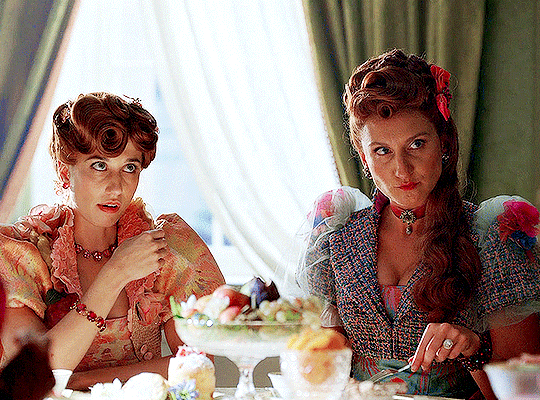
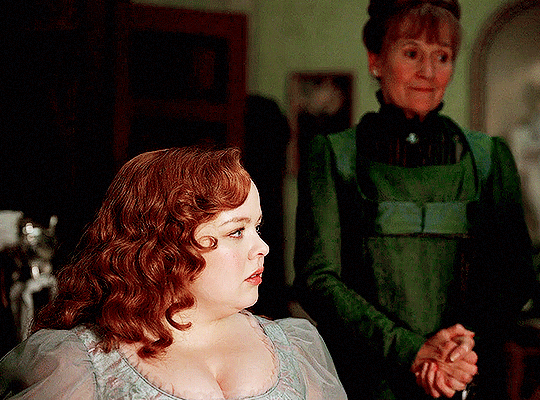
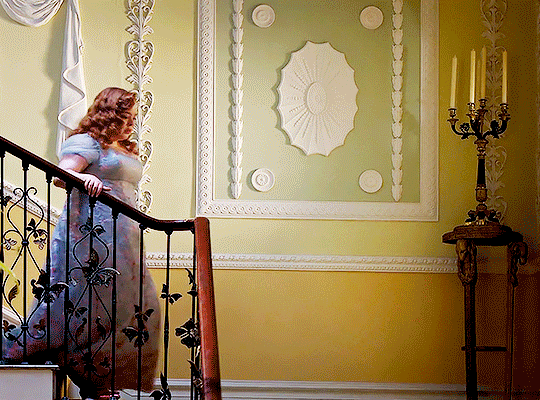
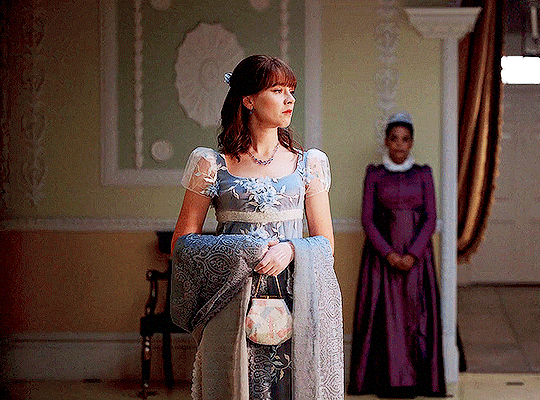

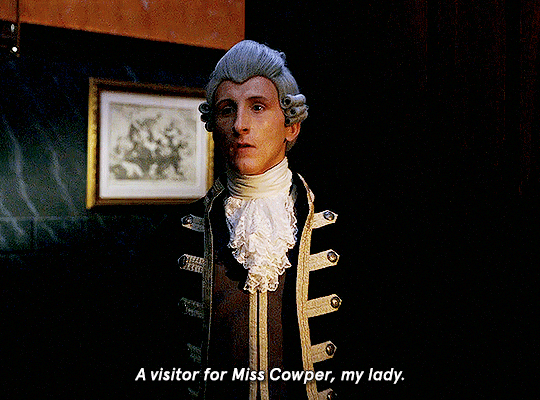

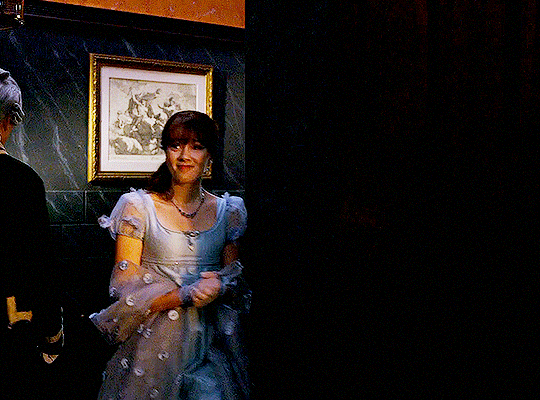

ELOISE BRIDGERTON + being mistaken for a suitor
#ladies i cannot take this anymore they cannot marry eloise off to a man they just CANNOT!!! free my girl from the shackles of the patriarchy#this show version is a brilliant lesbian coded suffragette spinster who’s the fictional love of my life… she deserves to break free!!!#idc tv eloise should be at uni they’ve deviated so much from historical accuracy & the books and everything is so anachronistic???#eloise should not be shoved into marriage that she has vehemently stated that she does not want just bc of accuracy. girl WHAT ACCURACY…???#bridgerton spoilers#bridgerton#peneloise#creloise#penelope x eloise#cressida x eloise#penelope featherington#eloise bridgerton#cressida cowper#bridgertonedit#netflixedit#perioddramaedit#perioddramagif#perioddramasource#perioddramacentral#tv#tvedit#tvgif#tvgifs#tvfilmdaily#chewieblog#userstream#usersource#userbbelcher#gifsbymisa
2K notes
·
View notes
Text
quotes by Victorians about the 1920s view of their generation's women
"We are frequently told that the Victorian woman...generally behaved like a pampered and neurotic infant. This is all moonshine. I do not think that I ever saw a woman faint before I came to London in 1869, and not often after then...they enjoyed a hearty laugh, and a good many of them a contest of wits with any man." -Nineteenth Century, a Monthly Review, 1927 (written by a man born in 1850)
"What queer ideas the girl of 1929 has about the Victorian period- they are not a bit true...Marriage was by no means the end and aim of our existence. Oxford and Cambridge claimed quite a few of us after school days were over. We had great ideas about 'life' and what it all might mean to us." -St. Petersburg Times, 1929 (written by a woman born in 1853)
"True, debutantes were chaperoned at balls. But that fact did not prevent them from dancing as frequently as they chose with their favorite partners. The idea that girls in the Victorian era spent their days sewing seams and practicing scales is another fallacy." -Gettysburg Times, July 1, 1927 (quote from the Dowager Lady Raglan, Ethel Jemima Somerset, who lived from 1857 to 1940)
#history#when they were still alive to defend themselves#maybe- much as I rag on modern historical fiction -we've gotten a bit closer to the truth than our grandparents did#see this is one reason I love studying the Victorian era (besides hoarding their detritus like a dragon I mean what)#it just is One Of The Eras Of All Time in pop culture#and it means so much to so many people that getting to the real human bottom of it fascinates me#spoiler: it boils down to 'people were people and always have been'
10K notes
·
View notes
Text


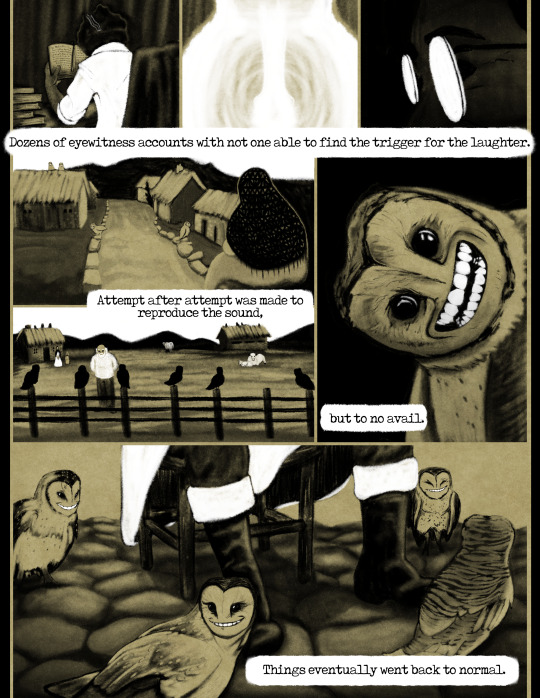
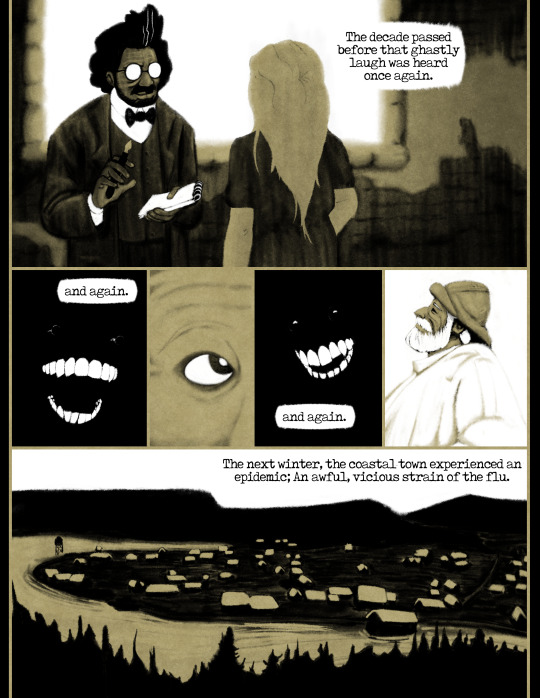
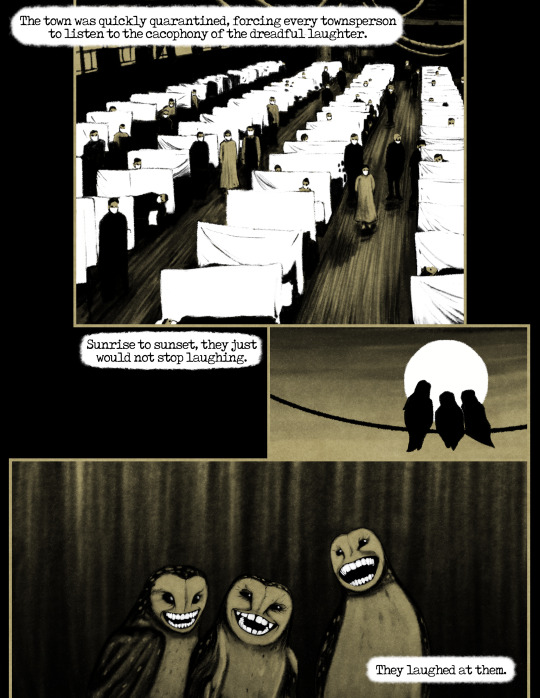
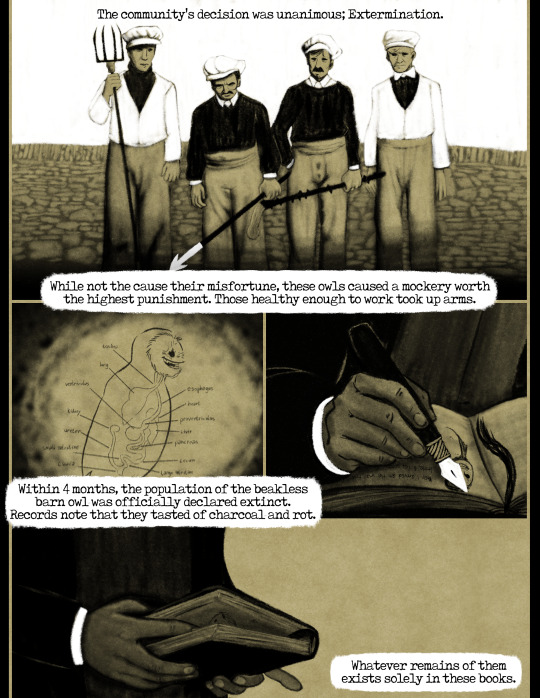
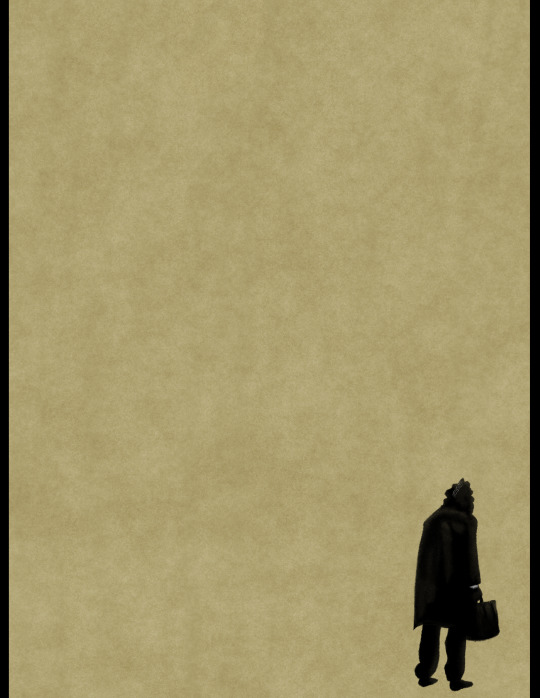
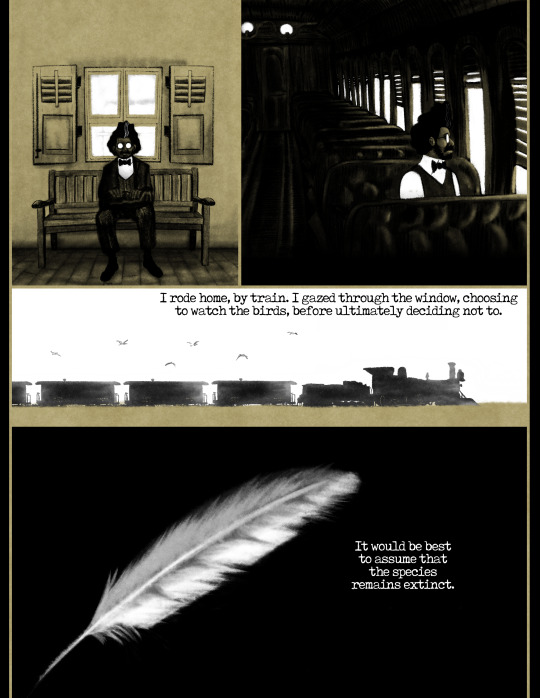
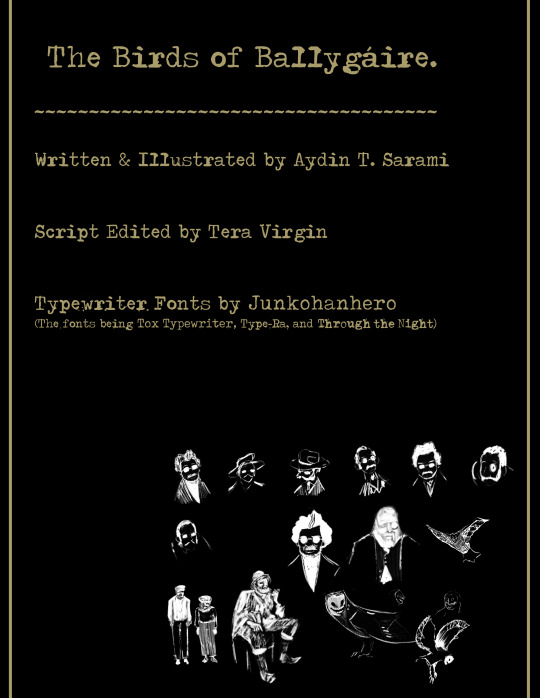
The Birds of Ballygáire.
thank you so much for reading. i appreciate it.
Special thanks to @terastrialbean for script editing & @junkohanhero for their wonderful typewriter fonts.
#oc#ocs#artists on tumblr#art#lovecraftian horror#lovecraft#horror#tyto alba#barn owl#bird#bird art#pendeedles#comic#comics#indie comic#indie comics#horror comic#teeth#irish horror#horror art#vintage#vintage horror#horror comics#indiecomics#dark fantasy#historical horror#historical fiction#illustrationartists#folk horror
2K notes
·
View notes
Text
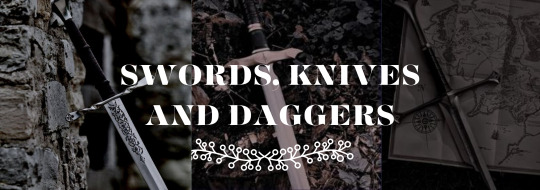
Writing Weapons (1): Swords
The Thrusting Sword
Type of fight scene: entertaining, duels, non-lethal fights, non-gory deaths, swashbuckling adventure
Mostly used in: Europe, including Renaissance and Regency periods
Typical User: silm, male or female, good aerobic fitness
Main action: thrust, pierce, stab
Main motion: horizontal with the tip forward
Shape: straight, often thin, may be lightweight
Typical Injury: seeping blood, blood stains spreading
Strategy: target gaps in the armous, pierce a vital organ
Disadvantage: cannot slice through bone or armour
Examples: foil, epee, rapier, gladius
The Cleaving Sword
Type of fight scene: gritty, brutal, battles, cutting through armour
Typical user: tall brawny male with broad shulders and bulging biceps
Mostly used in: Medieval Europe
Main action: cleave, hack, chop, cut, split
Main motion: downwards
Shape: broad, straight, heavy, solid, sometime huge, sometimes need to be held in both hands, both sides sharpened
Typical Injury: severed large limbs
Strategy: hack off a leg, them decapitate; or split the skull
Disadvantage: too big to carry concealed, too heavy to carry in daily lifem too slow to draw for spontaneous action
Examples: Medieval greatsword, Scottish claymore, machete, falchion
The Slashing Sword
Type of fight scene: gritty or entertaining, executions, cavalry charge, on board a ship
Mostly used in: Asia, Middle East
Typical user: male (female is plausible), any body shape, Arab, Asian, mounted warrior, cavalryman, sailor, pirate
Main action: slash, cut, slice
Main motion: fluid, continuous, curving, eg.figure-eight
Shape: curved, often slender, extremely sharp on the outer edge
Typical Injury: severed limbs, lots of spurting blood
Strategy: first disable opponent's sword hand (cut it off or slice into tendons inside the elbow)
Disadvantage: unable to cut thorugh hard objects (e.g. metal armor)
Examples: scimitar, sabre, saif, shamshir, cutlass, katana
Blunders to Avoid:
Weapons performing what they shouldn't be able to do (e.g. a foil slashing metal armour)
Protagonists fighting with weapons for which they don't have the strength or build to handle
The hero carrying a huge sword all the time as if it's a wallet
Drawing a big sword form a sheath on the back (a physical impossiblity, unless your hero is a giant...)
Generic sword which can slash, stab, cleave, slash, block, pierce, thrust, whirl through the air, cut a few limbs, etc...as if that's plausible
adapted from <Writer's Craft> by Rayne Hall
#writing#writers and poets#writers on tumblr#creative writing#let's write#poets and writers#creative writers#writeblr#resources for writers#helping writers#fantasy#sword#sword fighting#fight scene#historical fantasy#adventure fiction#description#writing practice#writing prompt#writing inspiration#writing ideas#on writing#writer#writerscommunity#writing advice#writing community#writer stuff#writers life#writers community#writers block
1K notes
·
View notes
Note
Hi I was wondering if you know of any good resources to get good vintage names that aren’t typical and boring (Fred, Edward, Alfred etc)?
Some of the names in the Santa letters are certainly peculiar and it made me wonder what kind of names those “vintage baby names” lists are leaving out 😜
Thanks! And happy new year 🎊
One place to get a good general overview of what names were like in a certain era is the Social Security Administration's lists of popular names that go back to the 1880s. The further down the lists you go the less common they get. However these are still all names that had at least a few hundred occurrences, so you're not going to have any Gloyds etc..
I personally always try to find names from primary sources (newspapers, census, vital records, etc.) as you're more likely to come across unusual names that don't make the top 200 lists.
Also keep in mind that name popularity varied greatly by location. Just because there were a bunch of Juanitas in Tulsa in 1930 doesn't mean there were that many in Boston.
Honestly if anyone is working on a specific project and needs names from a certain location/era (i.e. you're writing a novel that takes place in London in 1627) feel free to message me and I'd be happy to work with you to compile a list from primary sources. I love this stuff and will use any valid excuse to spend an evening digging through 17th century baptismal records.
#if you buy me a coffee I might even make you a simple custom name generator#I do this for myself all the time because I'm a party person who really likes spreadsheets#names#history#historical fiction#writing resources#asks#@sir-sleepalot#writing reference#character names
2K notes
·
View notes
Text

in hills made of coarse earth and honey🏺
✦ find me on instagram @the.flightless.artist ✦
#art#illustration#digital art#drawing#digital illustration#procreate app#digital drawing#digital artist#procreate art#ipad pro#ancient greece#ancient greek art#historical illustration#historical aesthetic#historic fiction#greek aesthetic#oh to be them#greek women#women in art#female friendship
1K notes
·
View notes
Text
my blacksmith business is doing unusually well this month
keep reading >>
1K notes
·
View notes
Text










A sneak peak at the visual development for Leviathan (2025) at Anime Expo 2024
#art#concept art#visual development#leviathan#leviathan trilogy#leviathan 2025#leviathan anime#leviathan series#leviathan netflix#studio orange#deryn sharp#dylan sharp#Prince Alek#aleksander of hohenburg#walker#lupine tigeresque#historical fiction#steampunk#official#anime expo 2024#ax2024#anime expo
818 notes
·
View notes
Text
I'm not explaining why re-imagining characters as POC is not the same as white-washing, here of all places should fucking understand.
#personal#delete later#no patrick. “black washing” is not as harmful as white washing.#come on guys get it together#seeing people in my reblogs talk about “reverse racism” and double standards is genuinely hypocrisy#say it with me: white washing is intrinsically tied to a historical and systematic erasure of poc figures literature and history.#it is an inherently destructive act that deplatforms underrepresented faces and voices#in favor of a light-skinned aesthetic hegemony#redesigning characters as poc is an act of dismantling symbols of whiteness in fiction in favor of diversification and reclamation#(note that i am talking about individual acts by individual artists as was the topic of this discourse. not on an industry-scale)#redesigning characters as poc is not tied to hundreds of years of systemic racism and abuse and power dynamics. that is a fact.#you are not replacing an underrepresented person with an oft-represented person. it is the opposite#if you feel threatened or upset or uncomfortable about this then sorry but you are not aware of how much more worse it is for poc#if representation is unequal then these acts cannot be equivalent. you can't point to an imbalanced scale and say they weigh the same#if you recognize that bipoc people are minorities then you should recognize that these two things are not the same#while i agree that “black washing” can lead to color-blind casting and writing the behavior here is on an individual level#a black artist drawing their favorite anime character as black because they feel a shared solidarity is not a threat to you#i mean. most anime characters are east asian and i as an east asian person certainly don't feel threatened or erased. neither should you.#there's much to be said about the politics of blackwashing (i don't even know if that's the right word for it)#but point standing. whitewashing is an inherently more destructive act. both through its history of maintaining power dynamics#and the simple fact that it's taking away from groups of people who have less to begin with#if you feel upset or uncomfortable about a fictional white character being redesigned as poc by an artist on twitter#i sincerely hope you're able to explore these feelings and find avenues to empathizing with poc who have had their figures#(both real and fictional) erased; buried; and replaced by white figures for hundreds of years#i sincerely hope you can understand the difference in motivations and connotations behind whitewashing and blackwashing#classic bixels “i'm not talking about this chat. i'm not” (puts my media studies major to use in the tags and talks the fuck outta it)
1K notes
·
View notes